how off am I in saying that looks more like a carrier reactor than a sub reactor? Or do all reactors look kinda the same?
All reactors are the same in terms of fundamental design. The reactor
compartments are different in submarines and surface ships due to room and security measures that are viable in submarines. A submarine is not only constrained by hull size but also operates in three dimensions and is more affected by pressure of the environment. This requires additional safety margins for operation of all sub-systems which in turn results in smaller reactors for submarines and larger reactors for surface ships because additional safety margins require additional room.
pop3 on Type 004
"004 construction not started yet , About to start. ...003 is not big enough, It was supposed to be a plan to produce 003 and 004, but 004 must be changed now (nuclear ?)"
004 could be Nuclear/Non-N, its not clear yet
004 will be a Supercarrier (100K tons)
This is
extremely interesting.
My subjective opinion (speculative, but not entirely uninformed) is that China has currently all the technical competence to build nuclear power plant for a carrier if at the cost of a short delay in construction. Therefore the only plausible reason for building another non-nuclear carrier is if the carrier will be of significantly different design that practical testing of some kind is required. I still think it makes no sense to pursue a non-nuclear vessel regardless of carrier design maturity because operating a nuclear carrier is an institutional skill that will have to be acquired anyway but it is plausible, unlike all the other arguments that were raised against it so far in the discussion.
Why does it matter? Carrier design is primarily about the
optimisation of deck operations.
Deck space and not internal space are the primary constraints, once supercarrier is economically affordable. This is why Ford has only three elevators compared to four on Nimitz and yet Ford is designed to sustain 160 sorties over 30 days vs 80 on Nimitz and a 3-4 day surge capability of 270 sorties vs 120. This counter-intuitive decision came out of practical experience with deck design which remained unchanged since Kitty Hawk class.
Note how similar Kitty Hawk, Enterprise and Nimitz are in terms of deck layout. Ford is the first major redesign.
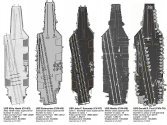
Note how the aircraft are placed along the angled deck on Ford. That's how they're placed on all USN supercarriers.
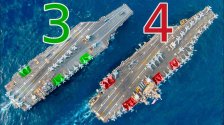
This is the reason for the redesign - data from elevator use during surges on Nimitz in 1997:
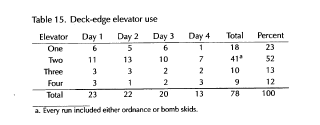
There are several longer videos on Ford design as well as studies available online but this is the shortest that explains the issue:
If you watch the presentation given by the program director he states that he regrets not being able to remove the volume search radar entirely since it is an unnecessary cost and complication that adds nothing of actual value in practical terms since AEW and escort ships provide better composite picture for C2 functions.
This is Fujian, with only two elevators and a very suboptimal deck design.
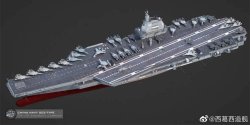
This design will fall short of even Nimitz-level of deck capability, let alone the claimed sortie rates that Ford is supposedly (but plausibly) capable of.
And that is a Nimitz, not a Ford - which would be a mistake, unless it's just a speculative vision made by an artist who is an enthusiast with emotional investment but no understanding of carrier operations.
![PLAN type 004 speculative [red].jpg PLAN type 004 speculative [red].jpg](https://www.sinodefenceforum.com/data/attachments/119/119879-0e8af8667e47eda0f3c796cf698b12a4.jpg)
As long as China fights in its own corner it has all the land infrastructure to support itself. But for any power projection e.g. Indian Ocean/Middle East that double sortie rate will become very relevant. In fact the fewer carriers you have, the better their sortie rate should be in theory. So PLAN should absolutely aim for a Ford.
So while China may be capable of building a nuclear powerplant, they may feel that they don't want to commit CVN money to a developmental step since if Kitty Hawk and Enterprise costs (260 and 450 million respectively) indicate that the first CVN would be 70% more expensive. And since CHina doesn't need carriers to the same extent that USN does they can afford to delay CVN construction until they get to the design that they feel comfortable with.
Nimitz-class was built over 35 years with a service life of 50 years. Since carriers are really just mobile airbases there is no reason to build a series until you get the efficiency of "airbase operations" that is required.
If 004 is conventional I would expect it to attempt to copy Ford in deck arrangement as it looks very capable and well thought-out. Let's not forget that Ford has been commissioned only in July 2017 and took time before all the systems were properly tested. Full operational capability was declared only in September 2022. China needed time to gather information on Ford design as well as compare it with their own practical data. PLAN acquired base experience only with Liaoning in 2012. Shandong was commissioned in 2019 which is when two teams can serve as alternative testing environments and Fujian has been designed before 2015. And lets not forget that military and political institutions, or any institutions in general, are not "intelligent" entities. They need time and sometimes plenty of mistakes to learn even if they are composed of most capable individuals.
Fujian is not the best design as far as carriers of this class go, and with all the data available PLAN may have decided that they want to test an alternative at minimum cost, before they commit to long-term investment. Especially that introducing large-scale nuclear safety to the fleet is just as challenging.
PLAN is exactly where USN was in 1960s/70s in terms of technology shifts and if you are familiar with the history you know that was a gigantic leap in capabilities that required "all hands on deck" and enormous economic and organisational commitment that no other navy in the world could match. Since there's no actual pressure on PLAN to deliver, as there was on USN due to geopolitics, a delay for refinement is rational if budget is being contested by other services. After all money is not infinite and even for PLAN SSN expansion is much more important currently than aircraft carriers.

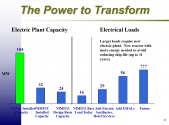




![PLAN type 004 speculative [red].jpg PLAN type 004 speculative [red].jpg](https://www.sinodefenceforum.com/data/attachments/119/119879-0e8af8667e47eda0f3c796cf698b12a4.jpg)